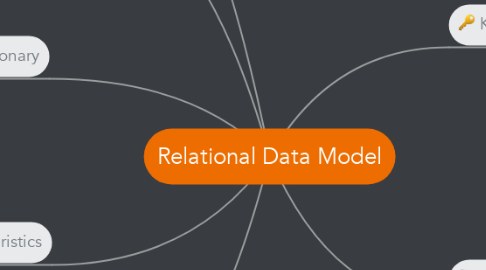Relational Data Model
par Luqman Teo


1. Characteristics
1.1. Logical view of relational database is based on relation
1.1.1. Relation thought of as a table
1.2. Table: two-dimensional structure composed of rows and columns
1.2.1. Persistent representation of logical relation
1.3. Contains group of related entities (entity set)
2. Integrity Rules
2.1. Many RDBMs enforce integrity rules automatically
2.2. Safer to ensure that application design conforms to entity and referential integrity rules
2.3. Designers use flags to avoid nulls
3. Data Dictionary
3.1. Provides detailed accounting of all tables found within the user/designer-created database
3.2. Contains (at least) all the attribute names and characteristics for each table in the system
3.3. Contains metadata: data about data
4. System Catalog
4.1. Contains metadata
4.2. Detailed system data dictionary that describes all objects within the database
5. Relationships within the Relational Database
5.1. 1:M relationship
5.2. 1:1 relationship
5.3. M:N relationships
6. Key
6.1. Composite Key
6.2. Attribute Key
6.3. Super Key
6.4. Candidate Key
6.5. Nulls
6.6. Foreign key (FK)
6.7. Referential integrity
6.8. Secondary key
7. Logical View
7.1. Relational model
7.1.1. View data logically rather than physically
7.2. Table
7.2.1. Structural and data independence
7.2.2. Resembles a file conceptually
